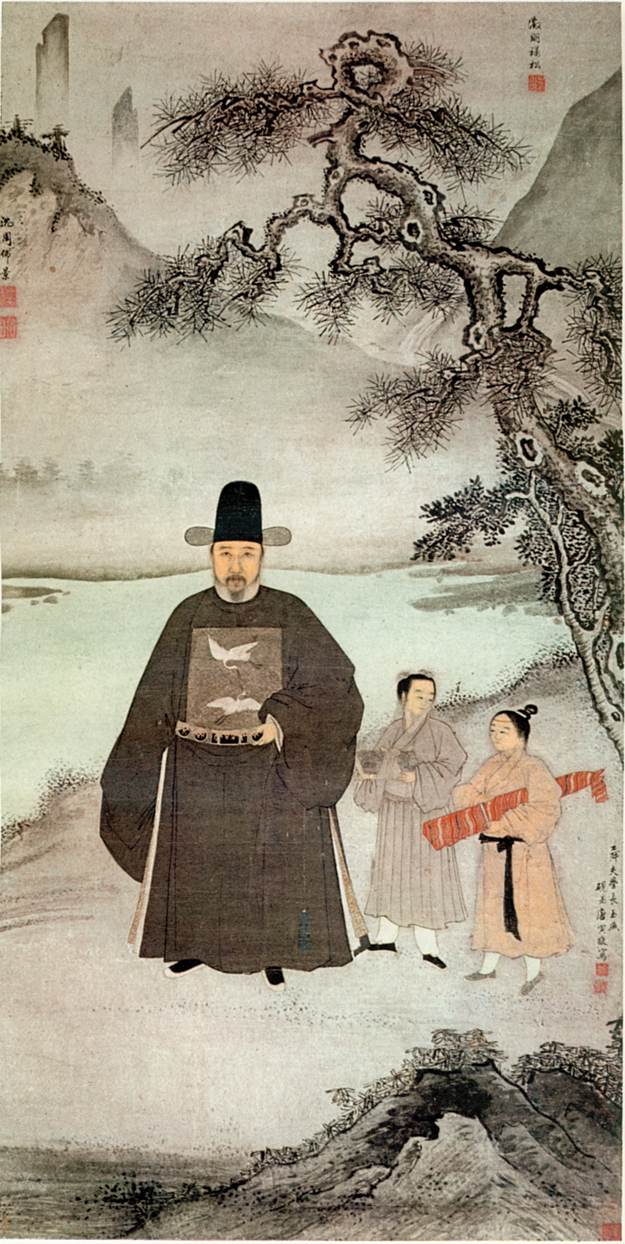A History of World Societies:
Printed Page 621
A History of World Societies Value
Edition: Printed Page 624
The Examination Life
In sharp contrast to Europe in this era, Ming China had few social barriers. It had no hereditary aristocracy that could have limited the emperor’s absolute power. Although China had no titled aristocracy, it did have an elite whose status was based above all on government office acquired through education. Agricultural land remained the most highly prized form of wealth, but antiques, books, paintings and calligraphies, and urban real estate also brought status. Unlike in many European countries of the era, China’s merchants did not become a politically articulate bourgeoisie. Instead the politically active class was that of the scholars who Confucianism taught should aid the ruler in running the state. With the possible exception of the Jewish people, no people have respected learning as much as the Chinese. Merchants tried to marry into the scholar class in order to rise in the world.

Thus, despite the harsh and arbitrary ways in which the Ming emperors treated their civil servants, educated men were eager to enter the government. Reversing the policies of the Mongol Yuan Dynasty, the Ming government recruited almost all its officials through civil service examinations. Candidates had to study the Confucian classics and the interpretations of them by the twelfth-
Of course, boys from well-
The examinations at the prefecture level lasted a day and drew hundreds if not thousands of candidates. The government compound would be taken over to give all candidates places to sit and write. The provincial and capital examinations were given in three sessions spread out over a week. In the first session, candidates wrote essays on passages from the classics. In the second and third sessions, candidates had to write essays on practical policy issues and on a passage from the Classic of Filial Piety (a brief text celebrating devotion to parents and other superiors). In addition, they had to show that they could draft state papers such as edicts, decrees, and judicial rulings. Reading the dynastic histories was a good way to prepare for policy questions and state paper exercises.
The provincial examinations were major local events. From five thousand to ten thousand candidates descended on the city and filled up its hostels. Candidates would show up a week in advance to present their credentials and gather the paper, ink, brushes, candles, blankets, and food they needed to survive in their small exam cells. To prevent cheating, no written material could be taken into the cells, and candidates were searched before being admitted. Anyone caught wearing a cheat-
After the papers were handed in, clerks recopied them and assigned them numbers to preserve anonymity. Proofreaders checked the copying before handing the papers to the assembled examiners, who divided them up to grade. The grading generally took about twenty days, and most candidates stayed in the vicinity to await the results. Those few who passed (generally from 2 to 10 percent) were invited to the governor’s compound for a celebration. By the time they reached home, most of their friends, neighbors, and relatives had already heard their good news. They could not spend long celebrating, however, because they had to begin preparing for the capital exams, less than a year away.